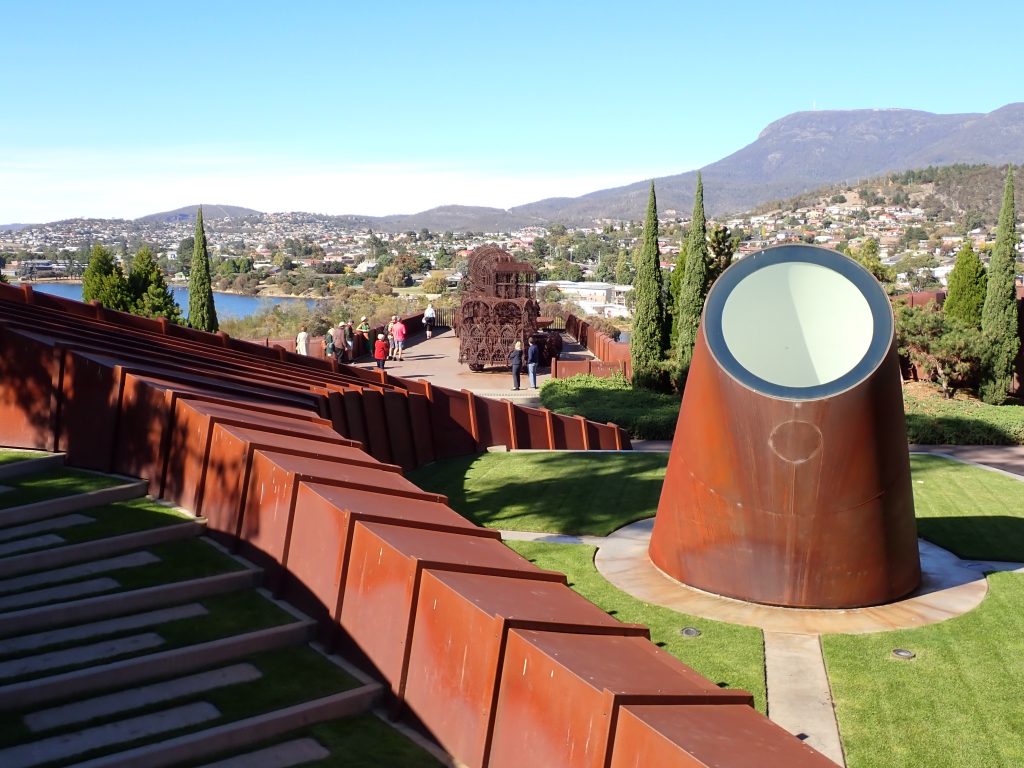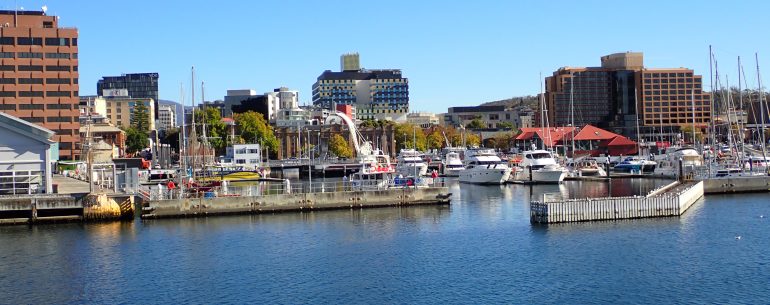The first adjective which comes to mind when describing MONA (The Museum of Old and New Art) is eclectic. Somehow though this doesn’t seem to do justice to the unique combination of art, architecture and experience which it represents. This experience started for us on the Mona Roma – a high speed catamaran from Bridge Street Pier in the centre out to Mona. Well that can’t be wierd you would think, and true, it was the least wierd part, but nevertheless, how can we put it …. it differed from the usual boat trip. For a start, if you wanted to sit on the aft deck, you sat on sheep, while on the foredeck a gorilla kept an eye on you. There wasn’t first class, but a posh pit and the trip came with an unusual accompanying soundtrack!
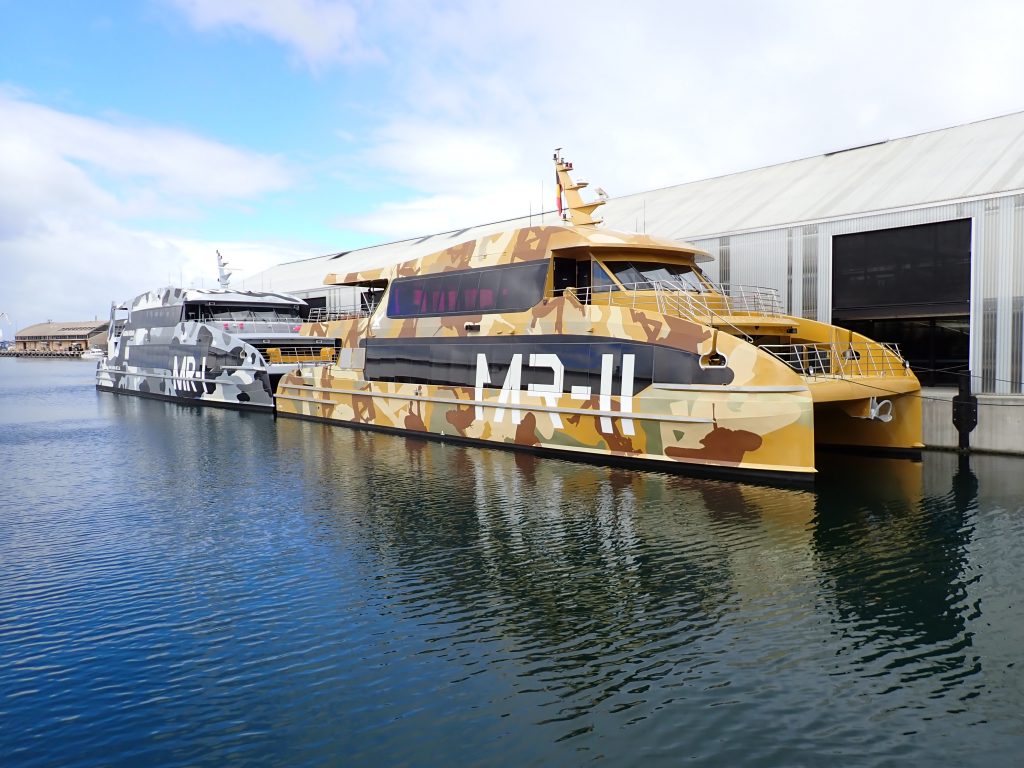
That though was nothing. On arrival at Mona you headed up 99 steps – there was a tunnel entrance but we were told we had to do the steps if we were able …. Once up at the top, there didn’t appear to be very much. A rusting steel parapet gave wonderful views of the surrounding suburbs and there was some very nice walking around the site – even going past the onsite vineyard and winery (all museums should have one …). We did though start wondering where the art was – apart from a couple of intriguing sculptures (one looking like it was made from recovered wrought iron architectural gates), there didn’t seem much and we finally spotted the entrance; a set of mirrored doors.

Once through the experience started – it turned out that Mona is essentially subterranean. The whole museum (or art gallery?) is carved out of the sandstone and feels almost like a maze. To find our way around we relied on the app which we had downloaded on advice at the entrance. The app was context and location sensitive, so wherever you were you pressed the ‘O’ on the app and it would tell you about the art works. It also gave you the map and, where the works were popular or restricted, you simply clicked on the app to join a virtual queue – once at the head of the queue, you got a notification to return to it to view. Actually we only did this for one artwork and that was called the ‘Confessional‘. This was a dark spiral that simulated an ear and took took you into an inner chamber. The whole thing is 12 metres wide and heads down for three stories underground – all of which is cut out of the sandstone below. The sound is guided simply by geometry – there are no speakers or microphones and yet what you say in the inner space can be heard above ground perfectly by whoever is standing outside the ‘ear’ above. We had a quite wierd conversation with some people who we will never see or meet …… I guess we could see why it was called the confessional – there is a real anonymity about any conversations.
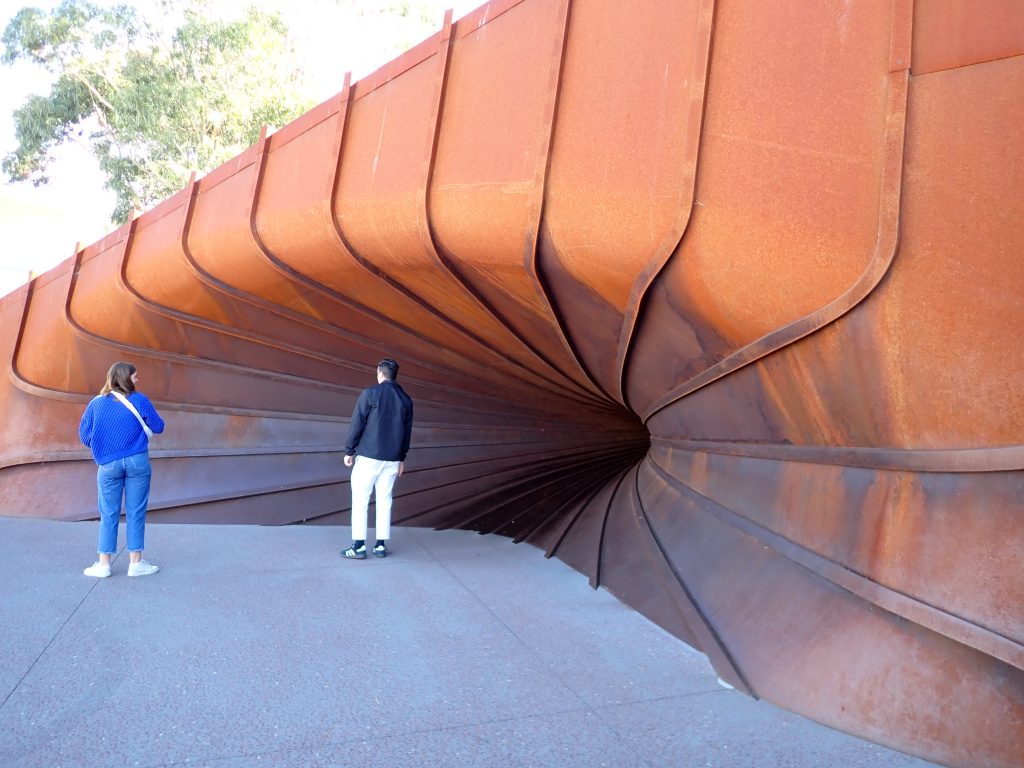
The other floors varied even within each display. One area focused on religious iconography, while others were a more varied mix. Seeing a 17th century 12-volume world atlas produced in Amsterdam was fascinating, but all the more so when one of the four books on display was open at the page about Essex! The other work which we queued for (just for a few minutes) was a piece called 20:50. This is an art installation that is essentially made from just steel and sump oil. It is by the sculptor Richard Wilson and is almost like a room where you walk in along a short steel path with the oil at waist height around you. The overall effect is created by the oil reflecting the space around , an optical illusion on a massive scale.
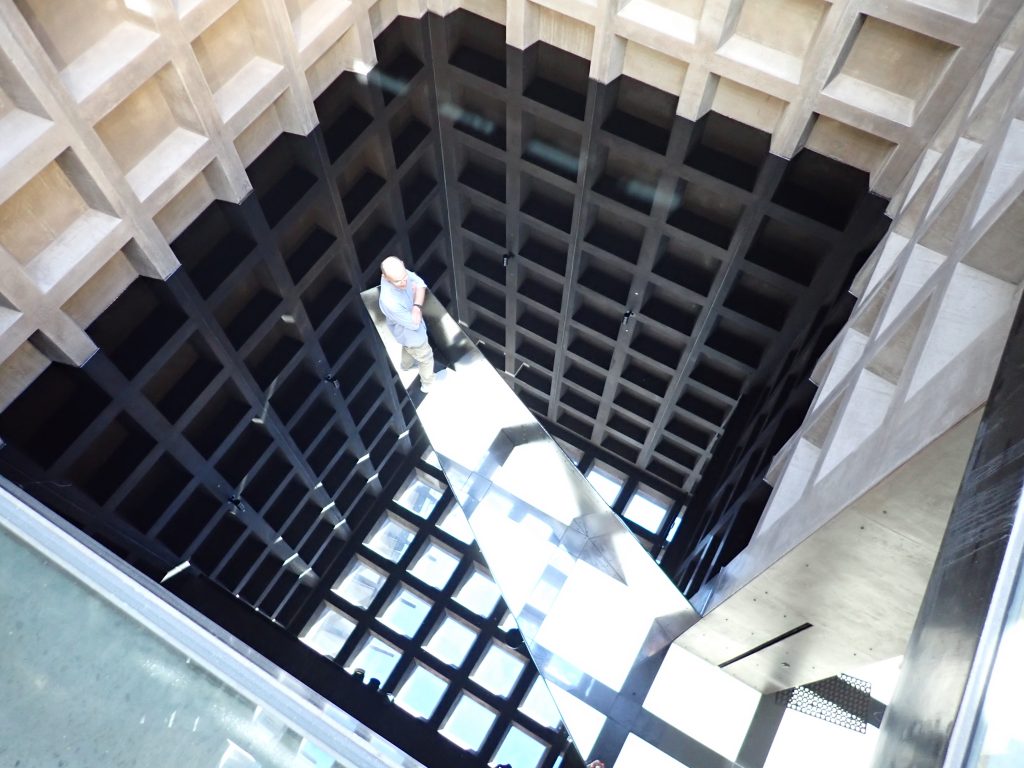
To explain all the other art and the attendant philosophy of Mona would be the subject of a book (which they sold in the gift shop – it is called Monanisms, a pun on onanism!), but the essence of the place was not just the art but the space, the architecture, the ambience and the way that we each reacted to the experience. Mona was developed originally as the Moorilla Museum of Antiquities in 2001. This closed in 2007 to undergo renovations to the tune of $75 million dollars. It then re-opened as Mona and has become one of the biggest attractions in Tasmania and perhaps even Australia. The funder (and owner) is called David Walsh and he made his fortune developing a gambling system to bet on horse racing and other sports. It is this fortune that funded Mona – perhaps slightly contradictory views of the ethics around the acquisition and spending of money, but it has certainly put Hobart on the international art map.
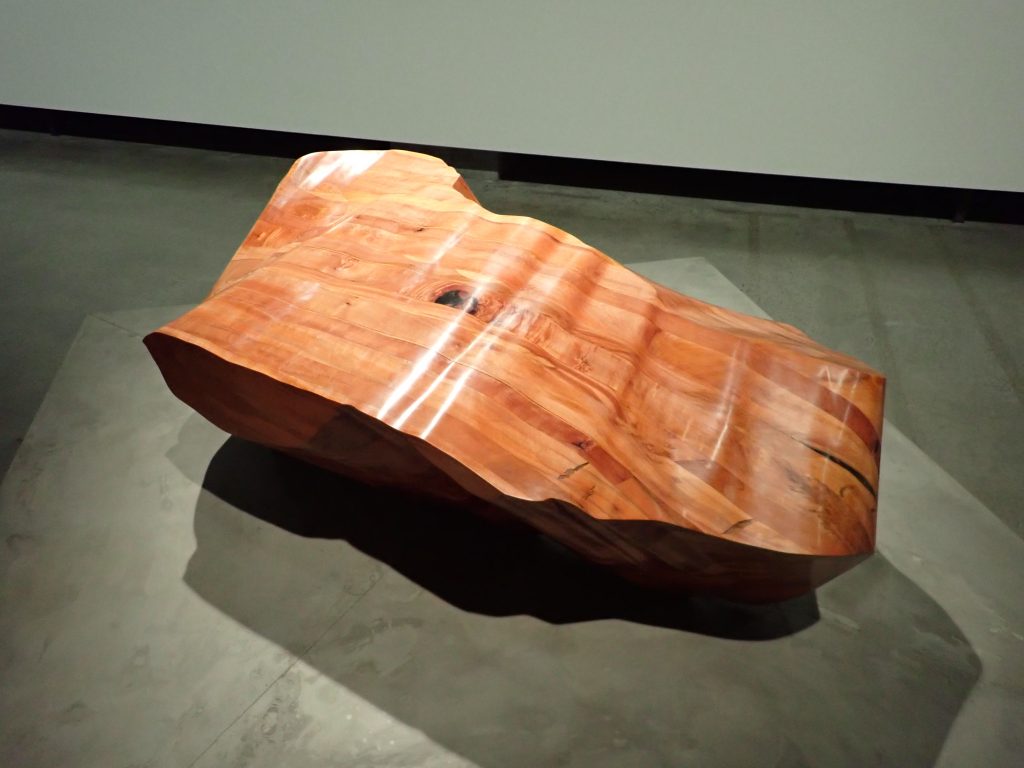
Walsh’s aim is to challenge and perhaps even subvert the conventional approach to exhibiting art and some of the pieces exhibited support this. Perhaps the most symbolic in this respect is a piece called Cloaca Professional by a Belgian artist called Wim Delvoye. This piece mimics the human digestive process and is, like humans, fed at specific times and, at a pre-advertised time, relieves itself ….. Perhaps making its own comment on modern art? According to museum feedback, it is one of the most hated artworks in the collection and yet research shows that people spend the most time looking at it! In a great piece of awareness raising, Cloaca Professional was screened for bowel cancer in 2017. This was part of efforts to promote uptake of the National Bowel Cancer Screening Program.
